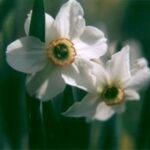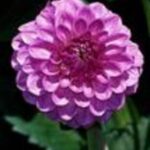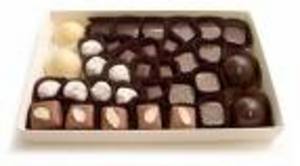Overview
The nasturtium plant is native to Latin America, from Mexico to southern South America, but it is now grown much more widely, including in most of the United States. It is a fast grower, and generally one that is easy to grow, needing little tending. Most gardeners grow it as a flower, but it is edible as well, its slightly peppery leaves making a nice addition to a salad.
Nasturtiums are fragrant, richly colored flowers of mahogany, orange, pink, red, or yellow. The nasturtiums you’ll most commonly see in gardens are very full, bushy plants that can grow to about a foot tall and a foot and a half wide. But there are also trailing varieties for walls and containers that grow to three to four feet long, as well as climbing vines that can reach heights of over ten feet.
Planting
Nasturtium seeds can be started indoors in peat pots and later transplanted, but nasturtiums struggle a bit more than most plants with transplanting, and most gardeners find it preferable to plant the seeds directly in their garden.
Plant nasturtium seeds after the last frost, half an inch deep and about a foot apart. Nasturtium plants do surprisingly well in poor soils and dry soils. They fare well in both full sun and partial shade. Some gardeners like to plant nasturtiums in whatever areas of their garden are most difficult to get anything to grow well, saving the better areas for the more picky plants.
Depending on the temperature of the soil, expect to see the plants come up in about a week.
For the most part, you can practice benign neglect with nasturtiums. Some sources recommend little or no watering for this drought-resistant plant; others recommend light weekly waterings. Certainly you won’t want to overwater; the soil should be kept fairly dry. You may want to use some fertilizer at midseason, or skip the fertilizer, mulch and compost entirely. The main difference is if you feed the plants during the growing season they’ll put out fuller foliage but not more flowers.
The plants may bloom in as little as 35 to 40 days, but how long it takes for them to bloom and how long the blooms will continue is dependent on your climate. Nasturtiums are susceptible to frost, so if yours are still blooming when the temperature starts to drop, you can sustain them a little longer by covering them at night.
If you deadhead the flowers–picking the blooms off as they die–the plant will produce more blooms.
Pests and Diseases
Nasturtiums repel some pests and attract others. Some pests like cucumber beetles and squash vine borers seem to be put off by the peppery leaves. Others, like flea beetles, slugs, and the caterpillars of cabbage white butterflies, like to infest nasturtiums. The plant is especially prone, though, to aphids.
Because of these traits, nasturtiums make good companion plants. If you plant them around plants such as cucumbers, pumpkins, and squash that are susceptible to pests like cucumber beetles and squash vine borers, you can minimize the pest problems for these plants. On the other hand, you can use your nasturtiums as a trap crop for aphids. Plant them far away from your plants that are most likely to be damaged by aphids, giving the pests a more appealing target.
In hot and humid weather, mold and fungus can be a problem. You can apply insecticides and fungicides as needed, or especially if you’re intending to eat the leaves, use organic alternatives.
Harvesting
If you’re growing the nasturtiums in part for food, the leaves can be harvested as soon as there are several leaves on the plant. Tender young leaves taste better. The leaves get more bitter as they age.
Less often people eat the flowers as well, though they tend to have less flavor. Fresh flowers that have just bloomed the same day are best.
Anything you harvest you should first examine carefully for pest infestation. Avoid what the aphids already got to before you did.
Enjoying
If you grow nasturtiums for food, the leaves, and to a lesser extent the flowers, are most often used as a peppery addition to salads.
The seeds are edible as well. Some people use them as a substitute for capers.
The flowers can also be used as a garnish.
Sources:
Marie Iannotti, “Nasturtiums – Cool Season Flowers with Hot Season Flair.” About.com.
How to Grow Nasturtium Plants.” The Gardener’s Network.
“How to Grow Nasturtiums.” eHow.






